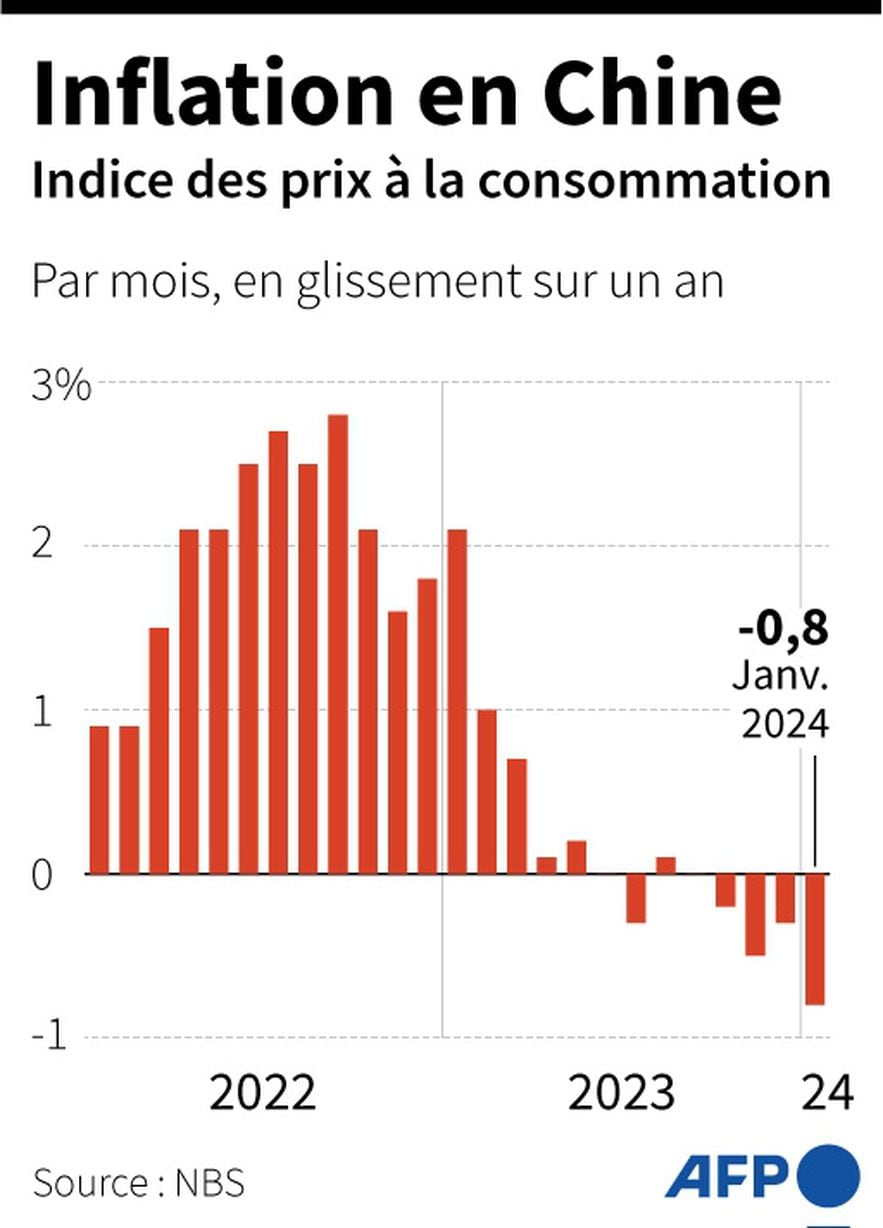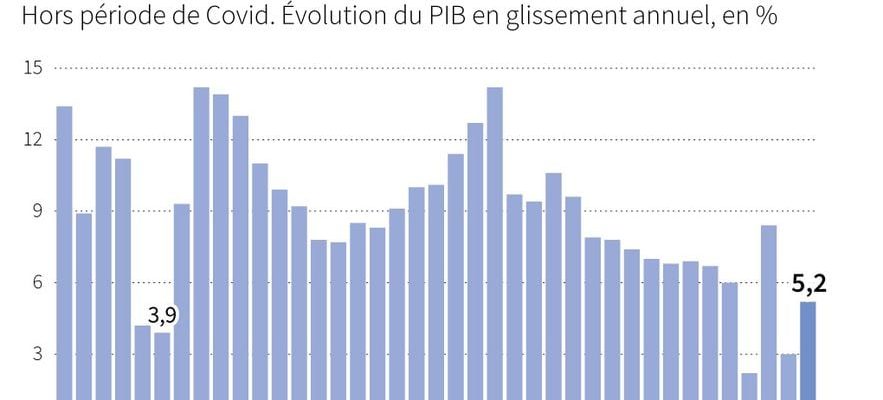This was one of the issues of his annual Session of Parliament. Faced with a gloomy context, China presented its main economic guidelines for 2024 on Tuesday March 5, in a context of slowdown and high unemployment among young people. L’Express has selected some key figures to remember.
Growth in 2024
China is targeting growth of “around 5%” this year. This objective is the same as the one it set for itself in 2023, when the lifting of health restrictions against Covid should allow the economy to rebound. But the much-hoped-for recovery is coming up against a real estate crisis, record unemployment among young people and a lack of household confidence which is hampering consumption.
Last year, the Asian giant’s gross domestic product (GDP) officially grew by 5.2%. But this pace, which many economists consider overestimated, was the lowest for China since the 1990s (excluding the Covid period).
2023: China experiences weakest growth in three decades
© / afp.com/Sabrina BLANCHARD, Gal ROMA
Employment and unemployment
Beijing sets a goal of creating more than 12 million jobs this year, a figure identical to last year’s milestone. This criterion only concerns job creation in the city and therefore does not reflect the situation in rural areas, where millions of migrant workers or locals live, often in more precarious conditions.
The objective does not provide information on the number of jobs destroyed in China due to the slowdown in the economy. China is targeting an unemployment rate of 5.5%, exactly like last year. Here too, this figure paints an incomplete picture of the situation. In China, unemployment is calculated for urban residents only and is particularly high among young people.
Deficit and inflation
To support a recovering economy last year, China widened its deficit to 3% of GDP. In 2024, this ratio must remain the same, argued Chinese Prime Minister Li Qiang. As for inflation, the objective is set at “around 3%”, the same range as last year, despite downward pressure on prices.
China has been in deflation for four months, and consumer prices experienced their biggest contraction in 14 years in January. Over the whole of 2023, inflation reached 0.2%, unlike the main economies which saw prices continue to soar.
Support measures
Public spending will increase with a budget set at 28.5 trillion yuan (3.649 billion euros). This is 1,100 billion yuan (141 billion euros) more than last year. China will also issue 1,000 billion yuan (128 billion euros) of government bonds to “strengthen (its) capabilities” in key areas.
At the same time, 3.9 trillion yuan (nearly 500 billion euros) of bonds will be issued to support local authorities. Their finances are drained after three years of staggering expenses to fight Covid. And the real estate crisis deprives them of an important source of income.

Inflation in China
© / afp.com/
Investments
“We will make China a preferred destination for foreign investment,” the government says in a report setting out current goals. Last year, foreign investment in China fell by 82%, according to official figures. This is their lowest level since 1993, according to the SinoInsider firm, based in the United States.
Investor appetite for China has a direct impact on the overall health of the economy. “We will make it easier for foreigners who work, study or travel in China,” assured the government without presenting concrete measures.
